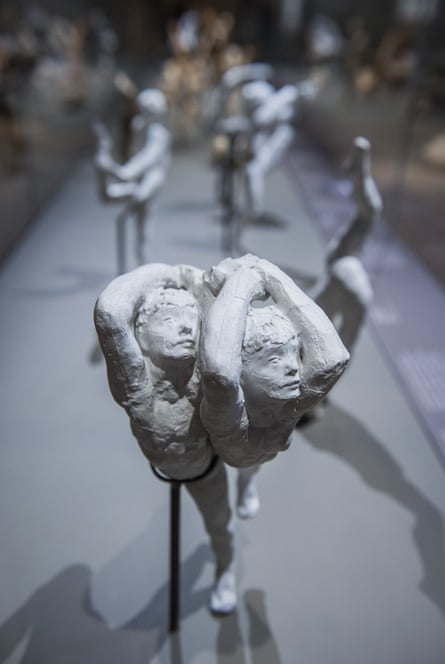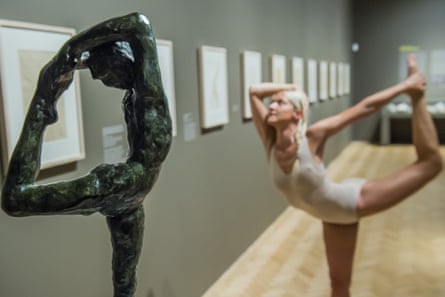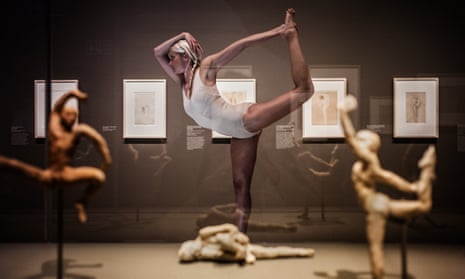Auguste Rodin is one of most mysterious and elusive of all great artists. Just to look at his life dates is to see how paradoxical he is. Born in 1840, died 1917 – that’s a life that reaches from the late Romantic age into the despair of the first world war. Rodin’s art also has one foot in the past, the other in the future. In the very same work he can resemble Michelangelo, Picasso and Louise Bourgeois.

Nowhere are the paradoxes more striking than in his late studies of dancers that have been brought together in an insightful exhibition at the Courtauld Gallery. Modern artists in the early years of the 20th century were shattering traditional ideas of form to express the dynamism of new technology and engineering. Only the kaleidoscopic broken lens of cubism could do justice to the aeroplane and the Eiffel Tower, it seemed. But when Picasso and Braque were inventing cubism, the futurists were turning art into a riotous performance and Marcel Duchamp was fixing a bicycle wheel to a stool, Rodin was still doing what he had done for decades: drawing and sculpting the human body in a way that was sensual, provocative and archaic.
Rodin tried to portray the new century in another way – through the freedom and wildness of dance. He planned to create a Monument to Aviation that celebrated the miracle of flight, the wonder of the age after Louis Blériot flew over the English Channel in 1909. Yet Rodin did not depict a flying machine. He tried to capture the marvel of flight in the pose of a dancer. His study Aviation (c.1910-13) is a hymn to human aerodynamics. A nude woman holds an extreme yet graceful pose holding one leg high behind her while balancing perfectly on the other.
She is Alda Moreno, a model and dancer who specialised in acrobatic human contortions. Moreno first posed for Rodin in 1903 then vanished in 1905; he found photographs of her in a pornographic magazine called Le Nu Academique. They worked together again from 1910 to 1913, the years when modern art was leaping through its most spectacular revolutions.
Rodin’s drawings of Moreno are not so very far removed from the black and white soft porn photographs of her in Le Nu Academique. He uses pencil smudged with a finger to give her body sensual strength in poses that defy belief, from doing the splits to her speciality of balancing with her leg bent up behind her, which she also performs in her erotic photographs.
His sketches are unashamedly sexual. He draws Moreno, with pink watercolour flesh, posing with her leg up, viewed from behind so he can see everything he wants to. What a dirty old man.
It was not enough to draw this talented contortionist. He had to turn her into a living doll. Rodin made two small clay figures based on his drawings and got his mould-maker to create moulds not just of the finished figures but the separate components of the dancer’s anatomy. He could then play with these like a child with a toy, to construct a series of dancers in superb, sensual poses.

The finished – or rather, eternally unfinished – results are displayed in a long glass case in the centre of the gallery. It is like a hallucination, a dream, or perhaps a Ray Harryhausen film. I almost expected the little figures to start moving about. Rodin’s dream dancer leaps and soars, glides and dives. She is Aviation, she is the new century, she is the ancient essence of desire and energy.
Rodin, a man of the 19th century, sees something hopeful and joyous in the new world he has lived into. Humanity is flying forward. What wonders lie ahead? It is 1913. The great powers are preparing their death dance.
- Rodin and Dance: The Essence of Movement is at the Courtauld Gallery, London, to 22 January

Comments (…)
Sign in or create your Guardian account to join the discussion